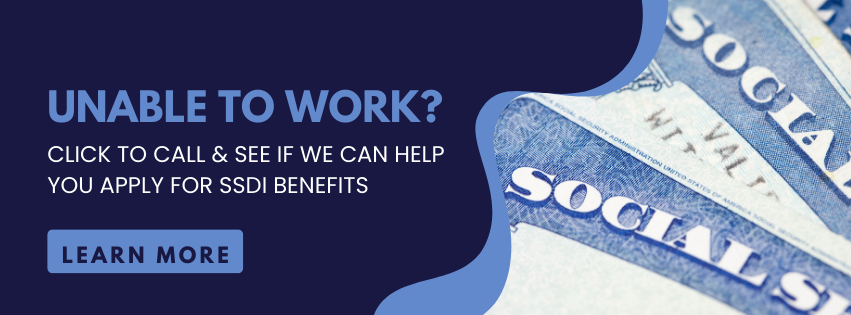Life can change in an instant. One minute, you’re living your everyday routine—working, managing responsibilities, and planning for the future. The next, an injury, illness, or disability changes everything. If you find yourself unable to work due to a disability, you may feel overwhelmed, uncertain of where to turn. That’s whereSocial Security Disability Insurance (SSDI)comes in.
What is SSDI?
SSDI is a federal program that provides financial assistance to individuals who can no longer work due to a severe disability. Administered by the Social Security Administration (SSA), SSDI offers monthly benefits to those who have earned enough work credits through previous employment. This program ensures that you don’t have to face financial hardship alone during a challenging time.
Who Qualifies for SSDI?
To qualify for SSDI, you must meet certain criteria:
- Work History: You need to have worked for a certain number of years and earned enough Social Security credits. The number of credits you need depends on your age when you become disabled.
- Medical Condition: You must have a medical condition that meets SSA’s definition of disability. This means the condition must be severe enough to prevent you from working and is expected to last for at least one year or result in death.
- Inability to Work: The disability must prevent you from performing the work you did before or from adjusting to other types of work due to your condition.

How SSDI Benefits Work
Once your SSDI application is approved, you’ll begin receiving monthly payments, which are based on your previous work history and income level. These benefits can help cover basic living expenses, including rent, utilities, medical bills, and other necessary costs.
In addition to cash benefits, SSDI recipients are typically eligible for Medicare after a two-year waiting period, which can help cover medical care related to your disability. This can provide much-needed relief as you focus on managing your health and adjusting to life with a disability.
How to Apply for SSDI
Applying for SSDI can feel daunting, but you don’t have to do it alone. Here’s a quick rundown of the process:
- Gather Documentation: You’ll need medical records, work history, and other important documents that support your claim.
- Submit Your Application: You can apply online, by phone, or at your local Social Security office. Make sure to provide complete and accurate information to avoid delays.
- Wait for a Decision: The SSA will review your application and make a decision. This process can take several months, and many initial claims are denied. If your claim is denied, you can appeal the decision.
Why SSDI Matters
SSDI isn’t just a government program—it’s a lifeline for people who can no longer work due to disability. For millions of Americans, it offers the financial support they need to maintain their dignity and independence during some of life’s toughest moments.
If you’re struggling with a disability that prevents you from working, SSDI can provide the peace of mind that you’re not facing this challenge alone. With the right information, preparation, and support, you can take the first step toward securing the benefits you deserve.
Ready to Apply for SSDI?
If you’re unsure whether you qualify or need help getting started, there are resources available to guide you through the process. Don’t let the complexity of SSDI keep you from getting the financial support you need. Take action today and begin your journey toward securing the benefits that could change your life.



